What Is Ozempic (Semaglutide) Face?
In this blog, I will discuss the implications of weight loss on the face, mainly related to Ozempic (semaglutide). In my next post, I will explore how weight loss affects the glutes, addressing both cosmetic concerns and their role as cushioning for bone structure.
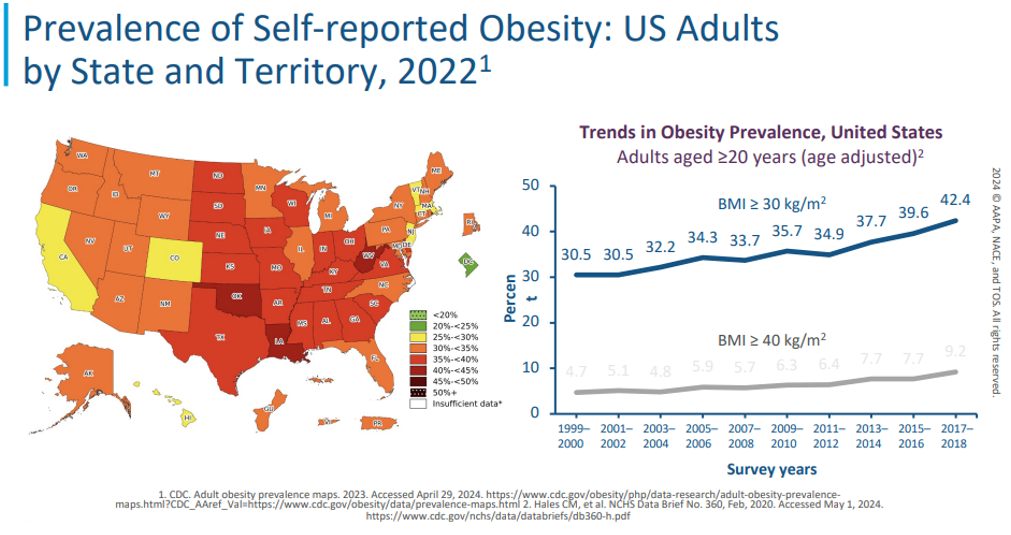
Understanding Obesity
Did you know that by 2030, the prevalence of obesity in the U.S. is projected to reach nearly 50%? Obesity affects 42.4% of the population, translating to approximately 146 million Americans. Alarmingly, over 90% of Americans are metabolically unhealthy. Obesity is rapidly becoming a significant health crisis, possibly surpassing the impact of COVID-19.
Why are so many people becoming obese? Contributing factors include the balance of calories in versus calories out, which is now in part refuted, hormone regulation, genetics, and the constant availability of food. Some studies indicate that Americans consume around 11 meals per day. One plausible explanation is insulin resistance. Each time we eat, insulin spikes, causing fat cells (adipocytes) to grow. Insulin promotes lipogenesis, while a lack of insulin encourages lipolysis.
In Type 1 diabetes, where insulin production is compromised, patients often experience significant weight loss due to fat breakdown for energy despite high glucose levels. This is a stark contrast to individuals on a ketogenic diet, who aim to lower insulin levels to encourage fat utilization for energy.
Health Consequences of Obesity
The consequences of obesity are severe and include hypertension, dyslipidemia, stroke, certain cancers (e.g., endometrial cancer), type 2 diabetes, and joint issues, among others. It can also lead to mental health challenges such as depression and conditions like polycystic ovarian syndrome (PCOS).
The Role of GLP-1 Agonists (Semaglutide)
While our bodies produce GLP-1, its effects are short-lived. Semaglutide, a long-acting GLP-1 agonist, has become a top-selling medication for obesity management.
Are Certain Populations More Affected by Obesity?
For individuals of Asian descent, obesity screening starts at a BMI of 27.5, compared to a BMI of 30 for non-Asians. Evaluating visceral obesity can involve waist circumference measurements and imaging techniques like DEXA scans.
Weight Loss and Muscle Preservation
While GLP 1 agonists such as Semaglutide, promotes fat loss, it can also lead to muscle loss (sarcopenia), which is linked to increased mortality. To mitigate this, it is essential to engage in weight resistance exercises and consume adequate protein (1.0 to 1.5 grams/kg).
Understanding Hunger and Society: The Role of Hormones
How do the hunger and satiety centers function?
Hormones play a crucial role in regulating hunger. Ghrelin, released from stomach cells, increases appetite, while insulin and amylin, produced by pancreatic beta cells, help reduce hunger after eating. GLP-1 and other satiety hormones, such as CCK and PYY, also act on the hypothalamus to regulate food intake. In those with obesity, these hormonal pathways can become disrupted, leading to overeating and further weight gain.
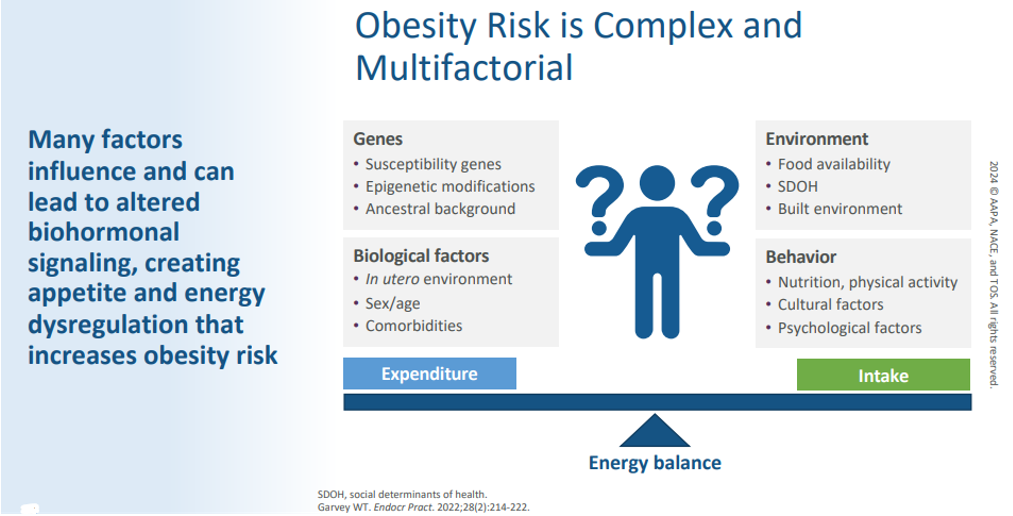
Maintaining low insulin levels through a low-carbohydrate diet can be effective in combating obesity. Processed foods tend to spike insulin levels, complicating hunger regulation. As obesity progresses, fat deposits in subcutaneous tissue grow, leading to hypertrophy of fat cells and the release of pro-inflammatory substances.
GLP-1 (glucagon-like peptide 1) is released from the intestines, initiating a cascade of satiety hormones such as CCK (cholecystokinin), gastric inhibitory peptide, oxyntomodulin (OXM), and Peptide YY (PYY). These hormones act on the hypothalamus, influencing the orexigenic (hunger-promoting) and anorexigenic (satiation-promoting) pathways. Leptin, an anorexigenic hormone produced by fat cells (adipocytes), signals the hypothalamus about energy reserves, promoting feelings of fullness. High leptin levels indicate sufficient energy, prompting the hypothalamus to reduce food intake.
In cases of obesity, these hormonal mechanisms can become disrupted, leading to improper hypothalamic responses and excessive eating, contributing to the condition. Achieving low insulin levels, mainly through a low-carbohydrate diet, is crucial, as high insulin levels, often caused by ultra-processed foods, can promote overeating. The hypothalamus may not recognize the flavors of these foods, increasing the likelihood of overconsumption. As obesity progresses, fat deposits grow, leading to adipocyte hypertrophy and the release of pro-inflammatory substances, which can result in fat accumulation in critical areas such as the liver, heart, and kidneys and as visceral fat surrounding internal organs.
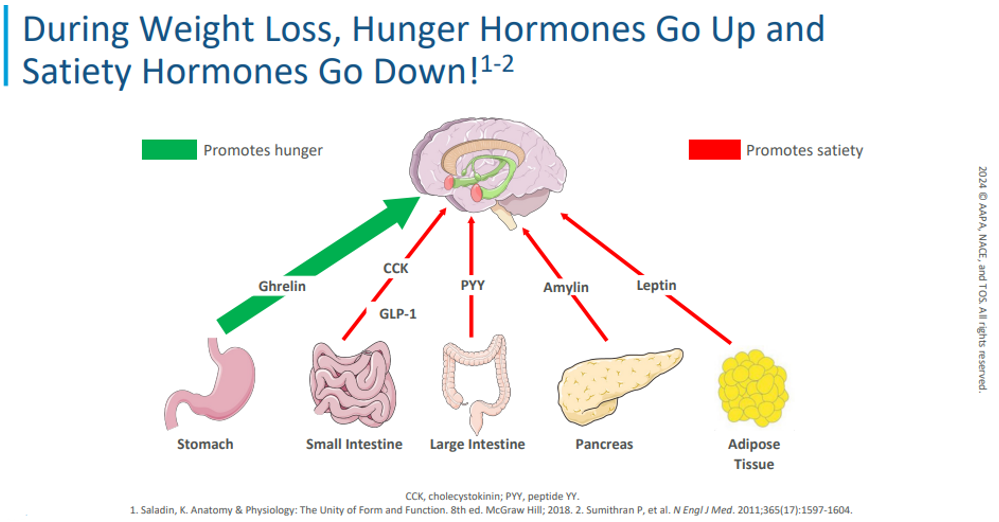
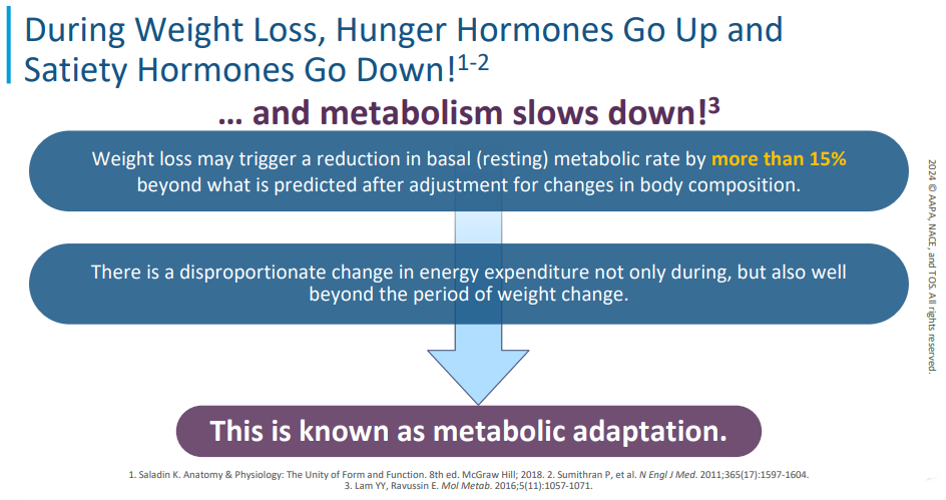
Lethal Consequences of Obesity
Obesity can lead to severe health complications, significantly impacting an individual’s quality of life. Key consequences include:
- Cardiovascular Issues:
- Hypertension: Increased blood pressure puts strain on the heart.
- Dyslipidemia: Abnormal lipid levels elevate the risk of heart disease and stroke.
- Stroke: Higher likelihood of cerebrovascular accidents due to poor circulation.
- Metabolic Disorders:
- Type 2 Diabetes: Insulin resistance resulting from excess weight.
- Gout: Elevated uric acid levels causing painful joint inflammation.
- Cancers:
- Increased risk of several cancers, including endometrial cancer.
- Respiratory Problems:
- Asthma: Weight can exacerbate breathing difficulties.
- Pseudotumor cerebri: Increased pressure on cerebrospinal fluid leads to headaches and vision problems.
- Joint and Mechanical Issues:
- Osteoarthritis: Wear and tear on joints due to excess weight.
- Mechanical complications: Pain and limitations in mobility affect daily activities.
- Inflammation: Chronic inflammation is linked to various health issues.
- Hormonal and Reproductive Disorders:
- PCOS (Polycystic Ovary Syndrome): Hormonal imbalance affecting women’s health.
- Menstrual irregularities: Disruptions in the menstrual cycle.
- Gastrointestinal Issues:
- GERD (Gastroesophageal Reflux Disease): Increased risk of acid reflux and related conditions.
- Psychological Impact:
- Higher rates of depression and anxiety are linked to obesity.
These conditions collectively contribute to a reduced quality of life, underscoring the critical need for effective weight management strategies.
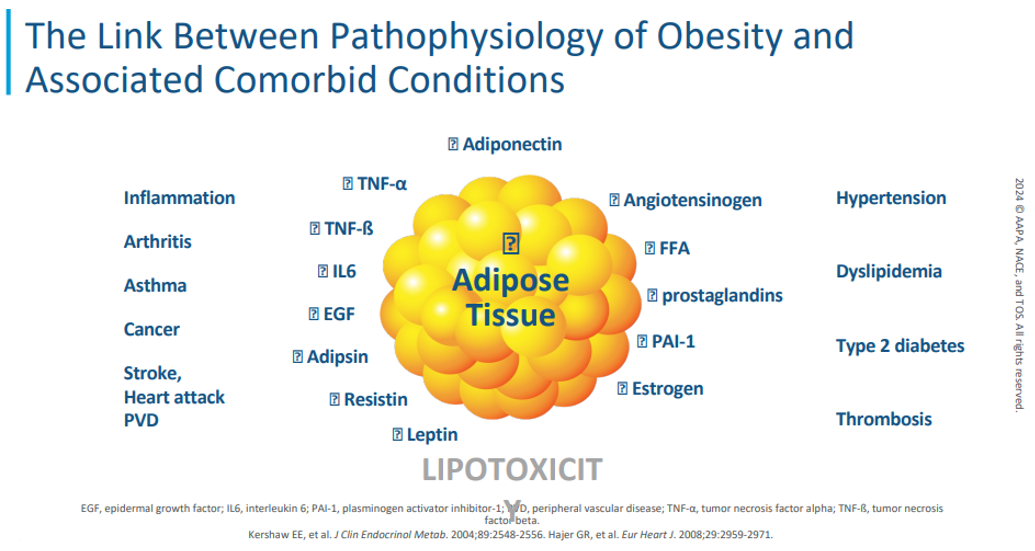
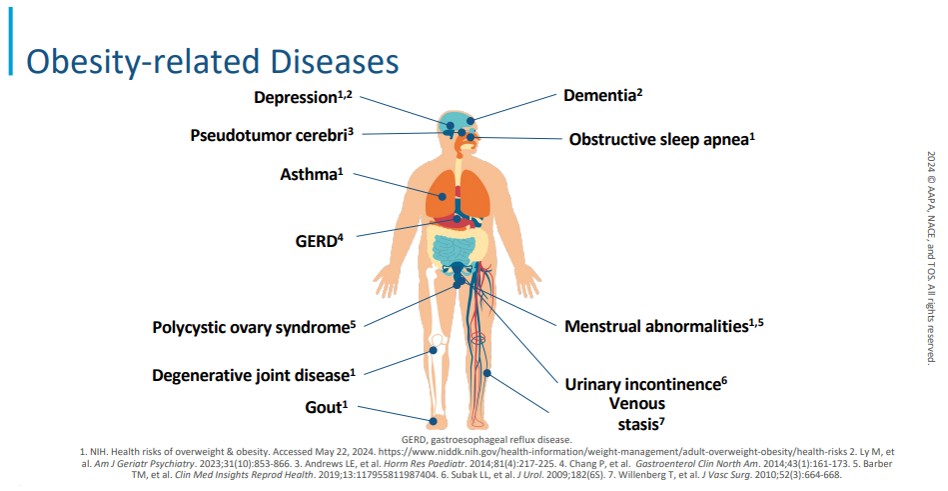
Why Use GLP-1 Agonists Like Semaglutide?
Many wonder why we need GLP-1 agonists such as Semaglutide when our bodies naturally produce GLP-1. The critical issue is that our body’s release of GLP-1 is short-lived. Semaglutide functions as a long-acting peptide, which is why it’s administered via weekly injections. Currently, it ranks as the second-best-selling medication globally and is projected to become the top-selling drug within a year.
Understanding Central Obesity
Central obesity occurs when the subcutaneous fat (white adipose tissue) reaches its limit. As adipocytes expand (hypertrophy), they leak pro-inflammatory substances, accumulating fat in the abdominal area, particularly around vital organs. This type of fat is considered “toxic” and is linked to severe health issues such as:
- Cancer
- Hypertension
- Stroke
- Dyslipidemia
- Endothelial dysfunction
The consumption of ultra-processed foods significantly contributes to insulin resistance, with fructose being a significant factor in the typical American diet. Additionally, it’s essential to consider the effects of chronic stress versus acute stress. While acute stress can be beneficial, chronic stress is harmful, leading to prolonged exposure to cortisol. Elevated cortisol levels can cause the body to break down muscle and bone to release glucose for energy, further exacerbating weight gain and metabolic problems.
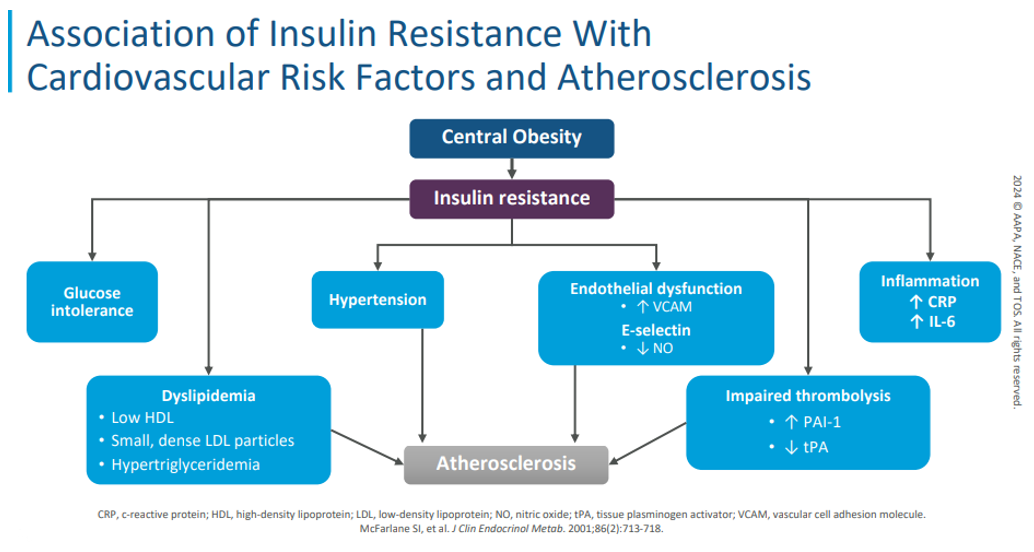
Are Asians More Predisposed to the Consequences of Obesity?
Asian individuals are screened for obesity at a lower BMI threshold of 27.5, compared to a BMI of 30 for non-Asian populations. This difference highlights a higher risk of obesity-related health issues in Asian patients, even at lower weight levels.
It’s essential to evaluate visceral obesity using waist circumference measurements, DEXA scans, liver ultrasounds, and, if available, MRI. These assessments help identify excess fat deposits in critical organs, including the liver, pancreas, heart, and muscles.

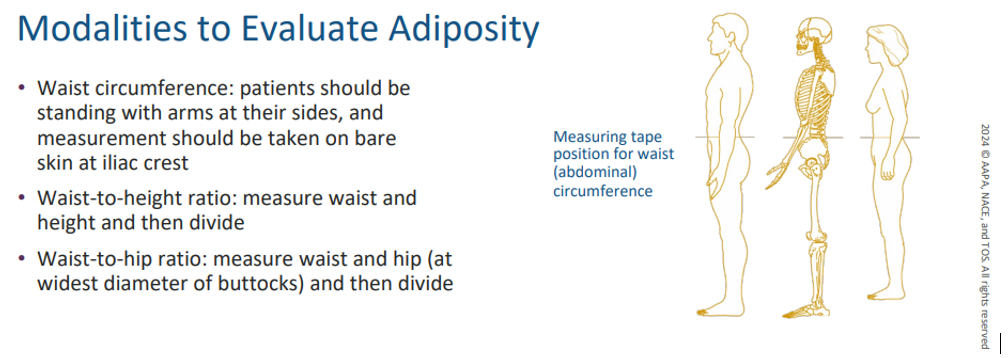
Do We Lose Only Fat While Under Semaglutide?
Unfortunately, weight loss on Semaglutide is not limited to fat; muscle loss can also occur. This muscle wasting, known as sarcopenia, is particularly concerning as it is linked to increased mortality and decreased lifespan. To mitigate this, engaging in weight-bearing exercises and maintaining adequate protein intake is crucial.
Do We Lose Fat and Muscle on the Face or the Rest of the Body?
When considering weight loss, many focus on gaining muscle mass in the legs, arms, and torso, often overlooking the face. Rarely do we see individuals at the gym performing facial resistance exercises. It’s essential to exercise facial muscles and consider fat replacement during weight loss.
Actors portraying malnourished characters in films often appear cachectic, highlighting the effects of malnutrition and inactivity. This brings us to an important question: does using these medications push our bodies into starvation mode?
Obesity vs. Starvation
The goal is to maintain our bodies in homeostasis, but this can be challenging. Control often lies with the brain, particularly the hypothalamus regulating hunger. This is why many people regain weight; the drive to eat can overpower other considerations.
Cachectic Face vs. Ozempic Face
I prefer the term cadaveric face to describe the effects of significant weight loss, as this can result from any weight loss treatment, including bariatric surgery and various eating disorders. An important concern is the acute muscle loss often accompanying weight loss programs.
To mitigate these effects, it’s crucial to combine the medication with a diet of unprocessed foods and to engage in regular exercise—aiming for at least 300 minutes per week. Additional strategies include eating breakfast, limiting screen time, and participating in a support group.
Weight loss can lead to noticeable volume loss in the mid- and lower face. Reduced adipocyte size results in sunken cheeks, sagging skin, deeper nasolabial lines, hollow eyes, diminished temple volume, and thinner lips. Overall, skin luminosity also declines.
How to Treat or Prevent Muscle, Fat Loss, and Skin Laxity During and After Weight Loss
To maintain facial volume and prevent skin laxity during your weight loss journey, consider the following strategies:
- Resistance Training: Incorporate resistance exercises at least twice a week to help build and maintain muscle mass.
- Increase Protein Intake: To support muscle retention, aim for 1.0 to 1.5 grams of protein per kilogram of body weight.
- Facial Muscle Stimulation: I recommend starting EMFACE, which utilizes electromagnetic and radiofrequency technology. This treatment promotes maximal muscle contraction, enhances blood flow, and minimizes facial deflation and wrinkles.
- Nano/Micro Fat Transfer: Address volume loss and wrinkles with a nano/micro fat transfer. This technique helps restore facial volume and is rich in regenerative cells, enhancing skin luminosity and reducing wrinkles. If weight is regained, the adipocytes may increase in size, potentially reversing some of the volume loss.
- Sculptra: For prevention, consider Sculptra, a collagen stimulator that helps improve skin laxity and adds some volume. It’s particularly effective for tightening the mid and lower face.
- Platelet-Rich Plasma (PRP): PRP is rich in growth factors derived from your platelets. This treatment enhances skin luminosity, reduces wrinkles, and addresses dark circles, among other benefits.
Combining these treatments has satisfied my patients, helping them maintain a youthful appearance and address metabolic issues.
Leading a Healthy Lifestyle
Obesity is a chronic, multifactorial disease with severe consequences. I hope this blog helps you understand this complex condition and guides you in addressing the cardiometabolic factors involved, ultimately leading to a longer, healthier life.



